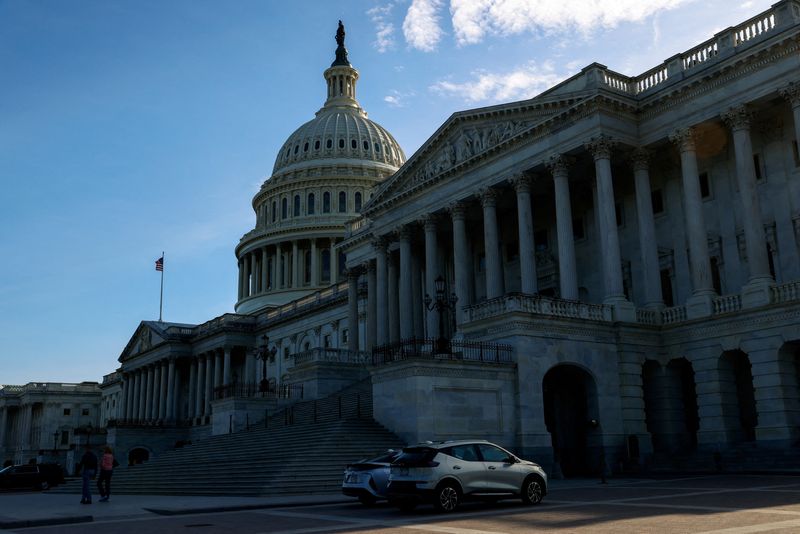By Richard Cowan
WASHINGTON (Reuters) – President-elect Donald Trump’s Republican Party will control both houses of Congress when he takes office in January, Decision Desk HQ projected on Monday, enabling him to push an agenda of slashing taxes and shrinking the federal government.
Republicans had already secured a U.S. Senate majority of at least 52-46, Edison Research projected, and DDHQ projected they would hold at least 218 seats in the House of Representatives, with eight races yet to be called in Tuesday’s election.
During his first presidential term in 2017-2021, Trump’s biggest achievement was sweeping tax cuts that are due to expire next year.
That legislation and Democratic President Joe Biden’s signature $1 trillion infrastructure law both came during periods when their parties controlled both chambers of Congress.
By contrast, during the past two years of divided government, Biden has had little success in passing legislation and Congress has struggled to perform its most basic function of providing the money needed to keep the government open.
The thin Republican House majority has been fractious, tossing out its first speaker, Kevin McCarthy, and routinely bucking his successor Speaker Mike Johnson.
Trump’s grip on the party and particularly its raucous hardliners has been far firmer – as evidenced by his success earlier this year killing a bipartisan deal that would have sharply stepped up border security.
His power will also be backed by a Supreme Court with a 6-3 conservative majority that includes three justices he appointed.
More immediately, the Republicans’ victory is certain to influence the House’s post-election “lame duck” session.

The current Congress faces end-of-year deadlines for funding the government to avoid shutdowns at Christmas and extending Washington’s borrowing authority to avoid an historic debt default.
One possible scenario is passing temporary patches to give the incoming Trump administration a say on these two controversial items when it assumes power from the Biden administration on Jan. 20. The new Congress convenes on Jan. 3.
